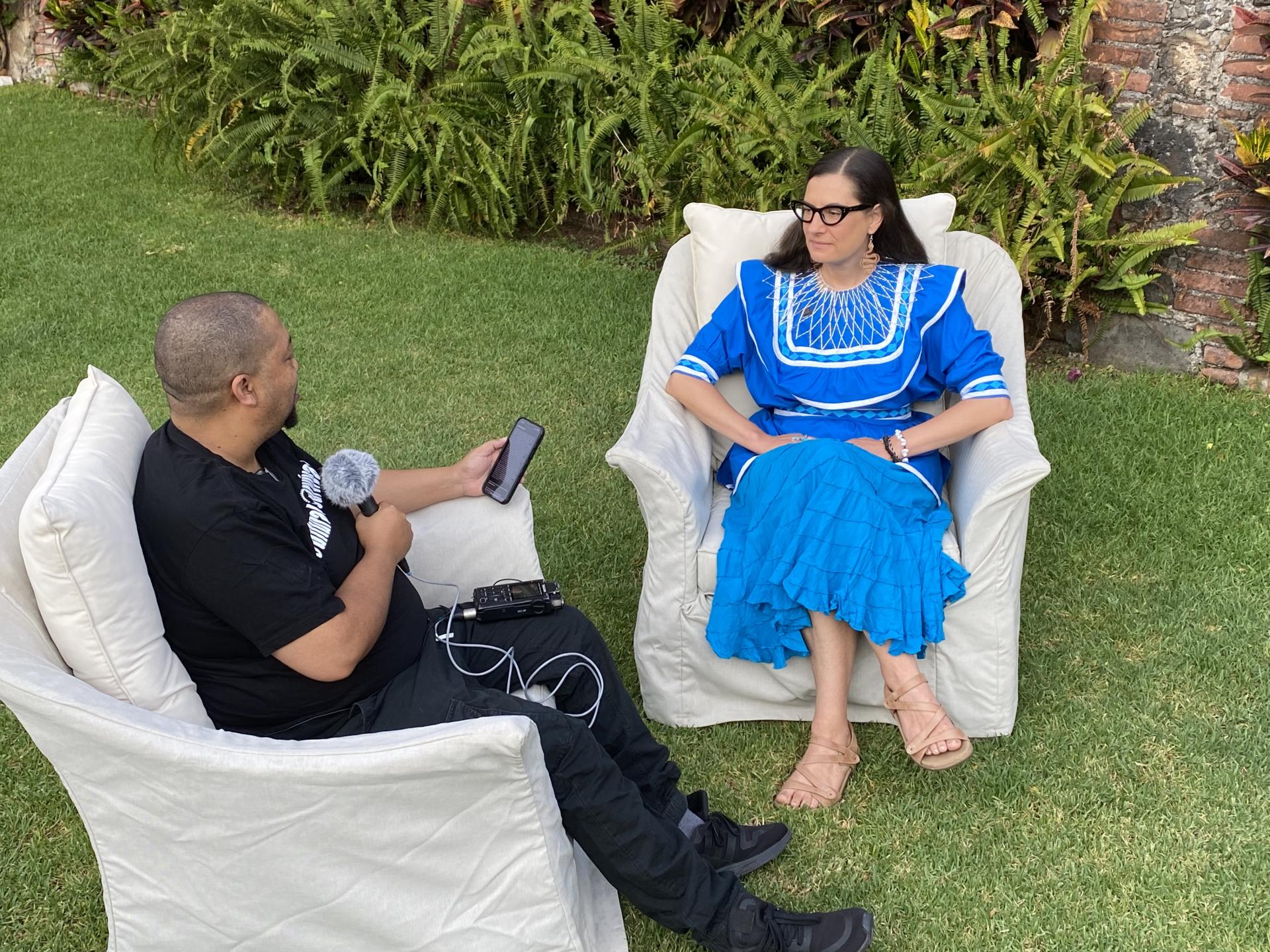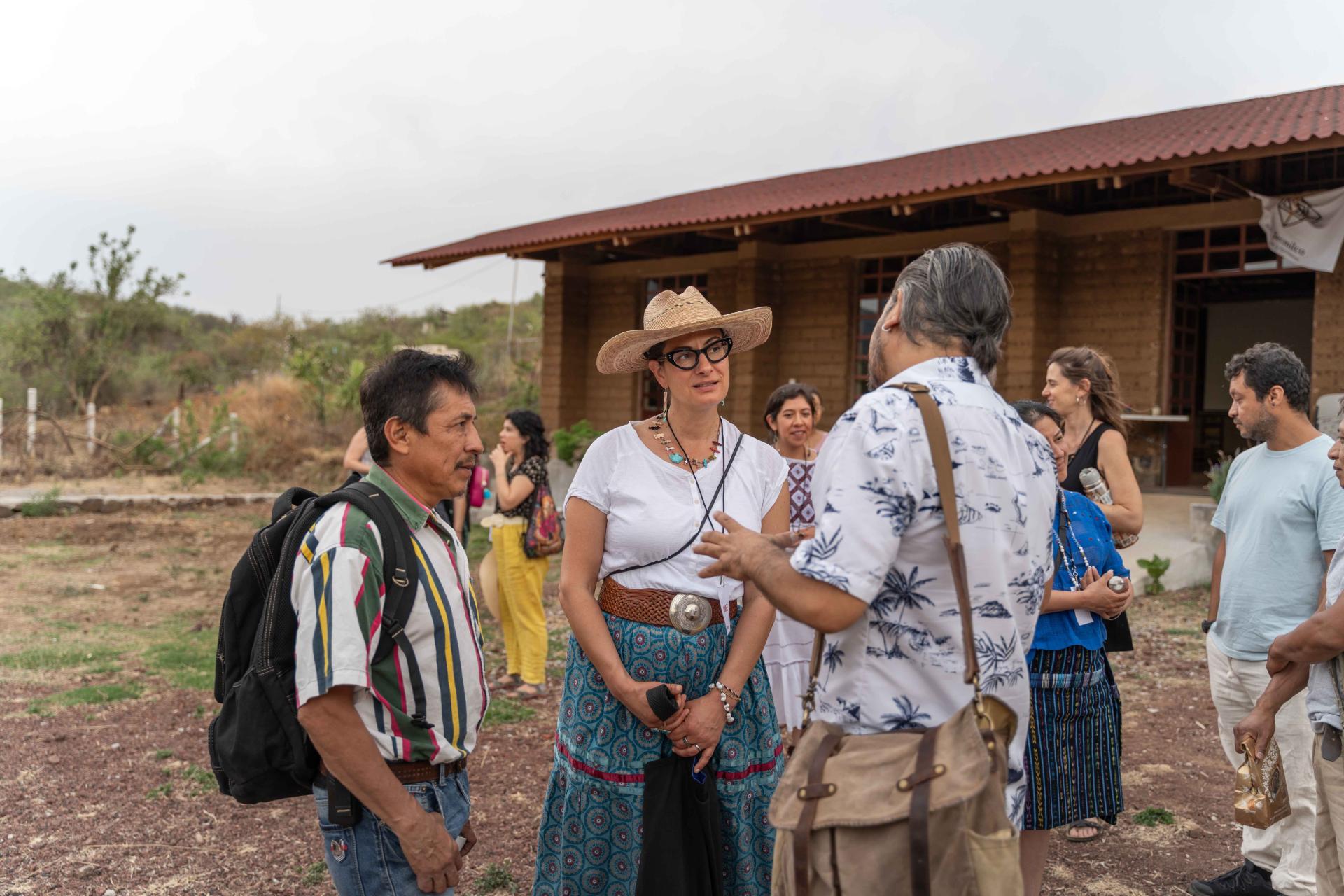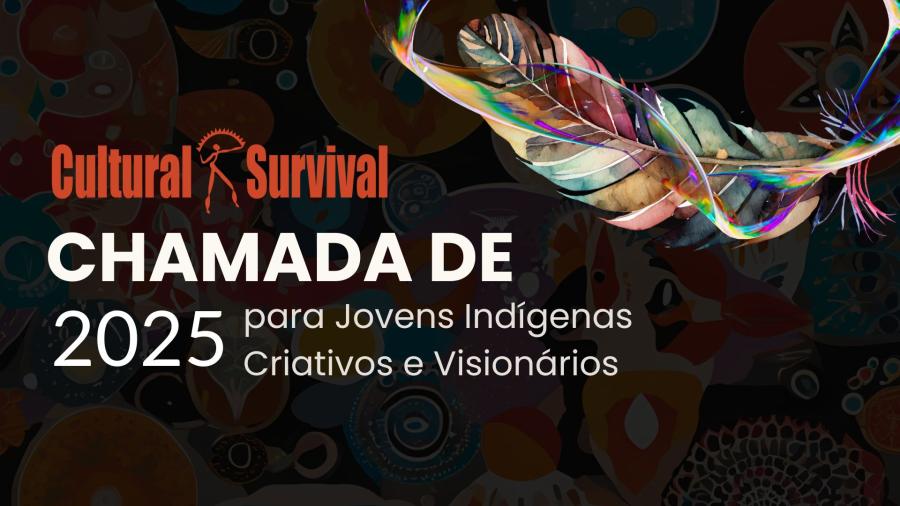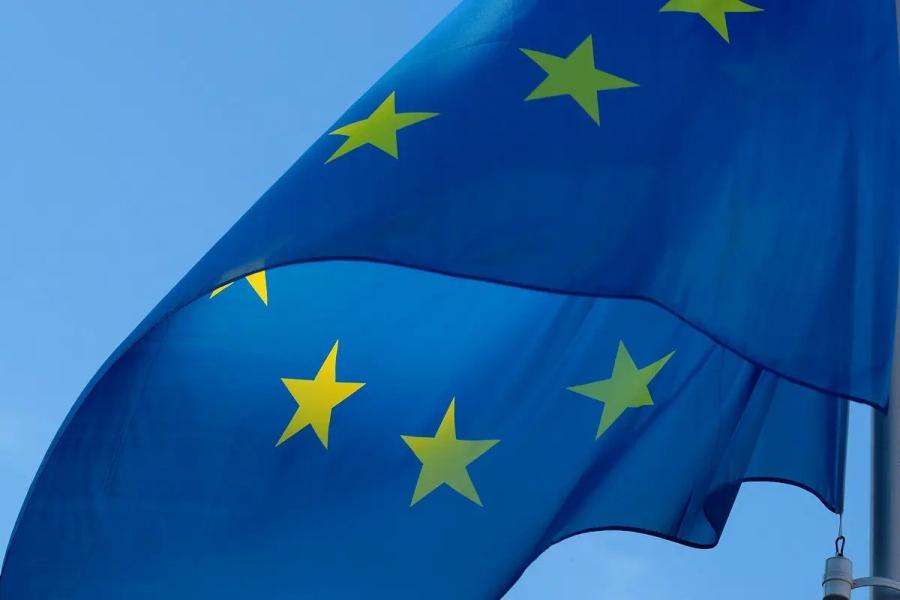
Aimee Roberson is a citizen of the Choctaw Nation of Oklahoma and also of Chickasaw, Scottish, Irish, and English descent. She is a lifelong student of Mother Earth’s wisdom and holds a bachelor’s degree in geology and a master’s in conservation biology. She is committed to reciprocity and community, and works with people to ensure that the social-ecological systems upon which we all depend continue to flourish. Throughout her career, Aimee has provided leadership to partnerships focused on environmental stewardship, co-creating a vision, integrating cultural values and ecological knowledge with science for meaningful decision-making, and implementing shared strategies in caring for people, wildlife, water, and ecosystems. Aimee comes to Cultural Survival from her role as the Director of the American Bird Conservancy’s Southwest Region. Previously, she served as Coordinator for the Rio Grande Joint Venture, and prior to that she worked for the U.S. Fish and Wildlife Service, focused on conserving biodiversity and helping people adapt to our changing climate. Aimee is a co-founder of the Indigenous Kinship Circle and Regalia Making Relatives. She also serves on the board of the Big Bend Conservation Alliance, and previously served on the boards of the Rio Grande and Sonoran Joint Ventures. Within her community, Aimee is learning Chahta anumpa (Choctaw language), practicing traditional arts, growing and preparing traditional foods, and learning and teaching about her Peoples’ history, values, and responsibilities to care for our land, waters, and all our relatives. Shaldon Ferris (Khoisan), Cultural Survival Indigenous Rights Radio Coordinator, recently spoke with Roberson.
Cultural Survival: Please tell us about yourself. Who is Aimee Roberson?
Since I was a child, I've always been enamored with our natural world. I love to be in nature, to listen to and watch birds, to learn about plants and all our relatives in the natural world. This has led me to work on conserving biodiversity and stewarding the ecosystems upon which we all depend, and also on working with communities to plan for adapting to our changing climate. I'm passionate about how these things intersect with Indigenous Peoples, our lifeways, sovereignty, and rights. And I'm committed to the continuance of my own Choctaw and Chickasaw cultures, our cultural survival, and our cultural thriving.
CS: You have a background in geology and conservation biology. How did you get into this line of work, advocating for Indigenous Peoples in the context of conservation and stewardship?
When I was thinking about going to college, I was trying to decide what I should study. I thought about journalism and environmental law. Ultimately, I really wanted to understand more about Mother Earth and how she works and how she supports all life. I was going to major in environmental studies, but I had a professor who said, ‘No, if you're going to be a scientist, you need to pick one. None of this interdisciplinary stuff, which is what environmental studies is.’ I picked geology because the courses were so interesting and the professors were very good. It's been an incredible foundation for me to understand the geophysical processes of how Earth works and how that's the foundation really for all life... In retrospect, I don't necessarily agree that you have to pick one field of science to focus on, because what I've come to understand is how everything is interconnected and how understanding a much broader perspective of our world is really necessary to know how to be good stewards and to conserve biodiversity.
When I went to graduate school, I wanted to get back to the idea of caretaking for our environment. I chose to study conservation biology. I had a teacher's assistant for an ecology class who told me, ‘If you want to be a scientist, if you want to study ecology, you cannot be an environmentalist. You have to be objective. And if you're an environmentalist, if you're an activist, that's not going to work with science.’ It never made sense to me because I thought, why would I want to spend so much time studying ecology in the natural world if I didn't care about it? And so this kind of inquiry of why some people care about our environment and others don't is something that's really driven my studies, my learning, and most of my career.
I came to realize that one of the things that's very important in this regard is the intersection of biodiversity conservation and ecosystem stewardship with Indigenous Peoples and our cosmovisions, lifeways, and cultures. These things inform our knowledge systems—our understanding of how we are not separate from nature, that we are a part of nature, and that we have important responsibilities to contribute to the ecosystems that we live in. It became very apparent that mainstream conservation circles weren't talking about this. They weren't talking about the fact that while Indigenous people make up just over 6 percent of the world's population, they steward 80 percent of the world's biodiversity. This seemed very important to me. I thought, why aren't people talking about this? In fact, conservation efforts at times have done just the opposite – instead of honoring the ancestral knowledge of Indigenous Peoples’, they have removed Indigenous Peoples from our lands and made it impossible for us to be the caretakers. We need to shift the paradigm, and I became very interested in making this shift happen. How do we help people to understand that Indigenous Peoples are the best caretakers of our homelands, that we know from thousands and thousands of years of ancestral knowledge what to do?
CS: Tell us about your work with Indigenous Peoples on the ground, stewarding ecosystems, protecting biodiversity, and planning for climate change adaptation.
I've been meeting with Indigenous communities across North America. As we gather in community with Indigenous Peoples, we've been learning about their struggles, about what they're doing to ensure that their lifeways and cultures continue, about the challenges that they're facing regarding that, and especially about what they're facing with climate change. We've been working to help communities, to support them, to access resources, whether it's funding, or in some cases technical assistance, to continue their good work, to continue taking up that responsibility to care for the land, to care for their cultures as part of the ecosystem, really understanding what they need and trying to help find the support that they need to do that.
CS: Please tell us about your most recent work with the American Bird Conservancy.
I love birds. I love how when they sing in the morning and greet the sun, it reminds us to be grateful for the day, to be present in the moment and to be aware of what's happening around us. One of the things we've heard from Indigenous communities we've met with is how they're not hearing the same birdsongs in the morning. They're not hearing as many birds, and the birds are, in fact, disappearing. We know from science that since 1970 we've lost 3 billion birds across North America. Populations have declined by that much. Birds really are the proverbial canary in the coal mine, telling us that we need to take urgent action. We need to restore the role of Indigenous Peoples in caring for the environment and being good stewards. American Bird Conservancy focuses on working in the places where birds that are declining the most and the fastest are living. They work with the people there to talk about what needs to be done to be better stewards and to provide them with what they need.
CS: You are co-founder of the Indigenous Kinship Circle. Please tell us about this initiative.
The Indigenous Kinship Circle emerged out of a conservation initiative called the Central Grasslands Roadmap. It is a group of people from Indigenous Nations and also many different sectors who are in a relationship in some way with the central grasslands of North America, from Canada through the U.S. into Mexico. These are places where migratory birds live throughout their annual cycle and remind us of how we're all connected. The Central Grasslands Roadmap got started in 2020 with their inaugural summit, and several Indigenous people participated in that, including myself and Monica Rattling Hawk who is Oglala Lakota. We came together and wanted to elevate Indigenous voices and perspectives in conserving our grasslands and native prairies. We worked together to build solidarity with Indigenous Peoples, to create opportunities for rekindling kinship routes and learning from each other, sharing information, and also building bridges with policymakers and western conservationists and scientists.

CS: What are the major challenges you see Indigenous Peoples facing today?
Globally, we're facing multiple crises. We're seeing this extreme decline in biodiversity. We're seeing ecocide, where ecosystems are being degraded to the point of no longer functioning and not being able to support life in the way they once did. And, of course, climate change has many challenges, as well as social inequity and injustice. What I've learned is that all of these things are interconnected, and all of them are disproportionately impacting Indigenous Peoples, who are trying to care for their homelands and continue the lifeways of their ancestors. We see that things like colonization, unfettered capitalism, and climate change are all coming together to make it very difficult for Indigenous Peoples. We need to keep our eye on climate change, because on top of the challenges that Indigenous Peoples are already facing in trying to stay connected to their lands or reconnect to their ancestral homelands, climate change is just exacerbating everything and making life and cultural survival more difficult.
CS: What needs to be done to solve these challenges?
We need to support Indigenous Peoples to do things in their own ways – to maintain connection to the land, to have their own way of governance, to make their own decisions, and to have autonomy and sovereignty. Indigenous Peoples have been marginalized from the dominant cultures around the world through colonization. They sometimes need reparations. We need to offer additional support, whether that's financial or technical, so that they can continue to do what Indigenous Peoples do and to live the way they want to live. There are lots of ways to do this. There are large global forums, but providing support on the ground is also very important. In between, we need to build networks and build solidarity with Indigenous Peoples so that we can learn from each other and support each other.

CS: Do you already have a vision for your role as Executive Director, or for Cultural Survival as an organization?
Cultural Survival already has a really beautiful vision and purpose. I'm a big fan of the work that you all have been doing and really grateful to be stepping into this role and to be a part of it. When I think about being the Executive Director, I am thinking about something I saw recently from Elaine Alec, a member of the Syilx (Okanagan) and Secwépemc (Shuswap) Nations in Canada who is the CEO at Naqsmist Storytellers and Founder of a framework for facilitating decision-making and governance built on Indigenous methodologies called Cultivating Safe Spaces. She defines CEO as Chief Empowerment Officer. I see that as my role, to empower the Cultural Survival staff to continue the good work they've been doing. I can provide some guidance, maybe refine some of the areas of focus that we want to work on together, and help us all figure out how we want to move forward. But for me, it's really about, how do we work together as a team collectively? How do we fulfill a particular niche within the broader community of people and other organizations working on similar issues? How do we find our specific roles so that we can all together achieve that beautiful vision? These are the things I’m thinking about as I prepare to step into this role.
CS: You have mentioned that you are learning Chahta anumpa (Choctaw language), practicing traditional arts, and growing and preparing traditional foods. Tell us more about your passions.
I'm passionate about the survival and thriving of my own cultures. I'm always looking to see how I can contribute to that. One of the things that my family and I like to do is to grow our traditional foods. From both my Choctaw and Chickasaw ancestors, we have seeds that have been with our people, with our families, for hundreds and hundreds of years. In fact, they were carried from our homelands when we were forced to walk the Trail of Tears to Indian Territory. One of these is Chikashsha Tanchi Homma, which is a very sweet Chickasaw red corn that my husband and I are growing, and hope to be able to share the seeds with more of our people. Another one of these seeds is Isito, a Choctaw sweet potato squash. These are plant relatives that we've been in relationship with for hundreds and hundreds of years. I love being able to continue that relationship.
I'm also studying our language. The Choctaw Nation of Oklahoma provides many opportunities for doing this. I'm currently taking online classes on Zoom on a weekly basis and learning how to keep our language alive. I'm also the vice president of the board of a nonprofit group called Regalia Making Relatives. We hold cultural classes monthly and other events to help share our knowledge and connect youth and elders to continue our culture and traditions through traditional arts and other Indigenous Traditional Knowledge. And I am a beader. I love to do beadwork. It makes me very happy and relaxed; I find it very peaceful and meditative. Usually, I make it for friends and family as gifts or when I'm meeting with other Indigenous people. Recently, I submitted a piece of my artwork to my first art show, so I'm really excited about that. The Choctaw Nation of Oklahoma has an annual art show, and I was recently informed that my submission was accepted. This is another way for me to help contribute to the continuance of our culture. I am so very grateful for our people, our ancestors, and our lifeways, and I am humbled and honored to be able to give back in reciprocity.
Help us welcome Aimee Roberson (Choctaw & Chickasaw) as our new executive director. We are launching the New Leadership Transition Fund to support Cultural Survival and the new executive director to go through the transition period, build on our strengths and successes, and guide the organization to new work to address the realities of the ever-changing world. We hope we can count on you as we embark on a new era with a new leader.



